The group focuses on diseases caused by filarial nematodes namely lymphatic filariasis (LF), onchocerciasis and mansonellosis. Research into these neglected tropical diseases are of importance in reducing morbidities and deaths associated with these infections. The groups’ research areas include clinical trials in LF and onchocerciasis aimed at finding best therapeutic regimen for the treatment of these diseases; molecular and genetic studies in LF and onchocerciasis; and identification of biomarkers in development of lymphedema.
1. Alternative treatment strategies using anti-wolbachial drugs to accelerate elimination of onchocerciasis and lymphatic filariasis (ASTAWOL)
The current therapeutic strategy employed globally against the elimination of lymphatic filariasis (LF) and onchocerciasis relies on mass drug administration (MDA) to interrupt transmission of infection. The existing regimen (Ivermectin plus albendazole for LF and Ivermectin for Onchocerciasis) for the treatment of both diseases only kills the microfilariae without long-term effect on the adult worms. There is therefore the need for alternative treatment strategies using anti-wolbachial drugs to accelerate elimination of onchocerciasis and lymphatic filariasis. Our research group has discovered doxycycline as an alternative macrofilaricidal drug with action against Wolbachia in adult worms, but treatment relies on higher doses (200mg/d) and long treatment duration (4-6 weeks) requiring critical monitoring.
On the other hand, Rifampicin has been shown to exhibit superior anti-Wolbachia potency in vitro and in vivo in LF and onchocerciasis models but this has not been translated into superior efficacy in clinical trials due to low doses administered. Therefore, the current study seeks to evaluate the macrofilaricidal efficacy of Rifampicin and Albendazole given at high, but safe doses as an alternative therapy, which if successful, could reduce the long treatment duration to 7 or 14 days. The shortened treatment duration will make the efficacious regimen amenable to MDA and significantly aid in the 2030 elimination goal.
Funding: The European & Developing Countries Clinical Trials Partnership (EDCTP)
Principal Investigator
Professor Alexander Yaw Debrah
Co-Investigators
Dr. Linda Batsa Debrah
Dr. Jubin Osei-Mensah

2. Tackling the obstacles of Filariasis and Podoconiosis disease control (TAKeOFF)
Previous studies with doxycycline (200mg/d) treatment for lymphedema (LE) resulted in amelioration of the lymphedema legs. Although this intervention was successful, it requires some medical supervision because of the 200mg dose used. However, in many African rural health settings where this disease is endemic, there are not enough medical personnel to carry out this supervision. Therefore, we are investigating whether a dose reduction to 100 mg/d which could be self-medicated, will show equivalent beneficial effects on LE pathology. Furthermore, this study seeks to establish a filarial clinical trial and research platform (F-CuRE) to address patient needs and deliver a novel health tool at the national levels.
Partner Institutions
KCCR – KNUST, Ghana
University Hospital, Bonn
Ludwig Maximillans University
University of Buea
The national Institute for Medical Research (NIMR)
Funding: BMBF, Germany
Principal Investigators
Professor Alexander Yaw Debrah (Ghana)
Prof. Achim Hoerauf (Bonn, Germany)
Dr. Akili Kalinga (Tanzania)
Prof. Samuel Wanji (Cameroon)
PD Dr. Inge Kroidl (Munich, Germany)
Dr. med. Ute Klarmann-Schulz (Bonn, Germany)
3. The efficacy of rifapentine plus moxifloxacin against onchocerciasis (MORION)
Current strategies in the control and prevention of this disease relies on the annual mass drug administration (MDA) of ivermectin which is mainly microfilaricidal, hence female worms resume microfilariae repopulation to levels high enough for transmission. Contrary to ivermectin, doxycycline has been shown to have macrofilaricidal effect on the adult worms, however, it is not recommended for MDA due to its long treatment duration.This study seeks to find a drug or drug combination with macrofilaricidal activity given for shorter treatment duration. Previous studies conducted by our research group in mice models revealed that the combination of rifapentine and moxifloxacin given for 4 to 7 days had macrofilaricidal effect on the adult worm. The translation of this outcome in mice to treatment in humans is realistic, hence, the focus of the study. If successful, treatment durations for onchocerciasis will be shortened and transmission ceased.
Partners
University of Bonn, Germany
Kumasi Center for Collaborative Research in Tropical Medicine
Funding: University of Bonn, Germany
Principal Investigators
Professor Alexander Yaw Debrah
Dr. med. Ute Klarmann-Schulz (University of Bonn, Germany)
4. Risk for HIV Infections through Nematodes (RHINO)
Helminths affect the world’s poor and provoke a chronic disease state in one-fourth of the world’s population. The disproportionately high prevalence of human immunodeficiency virus (HIV) in communities of sub-Saharan Africa has led to the hypothesis that concomitant helminth infections might increase the risk of HIV transmission. In previous studies our group revealed for the first time an increased risk for HIV acquisition in individuals infected with the filarial nematode Wuchereria bancrofti. In this study, we seek to determine if infections with Onchocerca volvulus and Wuchereria bancrofti increase an individual’s risk of acquiring HIV and to decipher whether HIV susceptibility is driven or influenced by distinct immunological changes/ pathways in the host due to these filarial infections. Long term translation of these findings to other helminth-HIV scenarios would constitute another major benefit in the global eradication efforts against these parasites.
Principal Investigators
Professor Alexander Yaw Debrah
PD Dr. Inge Kroidl (LMU, Munich, Germany)
5. First-Stage Genome Wide Association Study (GWAS) of Lymphatic Filariasis Pathology
Current control regimes by the World Health Organization (WHO) aim at decreasing transmission by reducing the levels of microfilariae (larvae, MF) in infected individuals. This can be achieved if the molecular basis of developing a particular pathology is known. Our earlier cross-sectional, candidate gene studies have been successful; however, the associations discovered explain only a fraction of the genetic causes of lymphatic filariasis. Therefore, we propose a GWAS to comprehensively discover genetic factors involved in the pathophysiology of this complex infectious disease. This study will lead to a long term multistage GWAS-design, which finally will lead to a deep understanding of the underlying disease pathophysiology.
Principal Investigators
Professor Alexander Yaw Debrah
Dr. Kenneth Pfarr (University of Bonn, Germany)
6. Rapid diagnosis of onchocerciasis using urinary biomarkers
Current diagnostic methods in filariasis are still far from being satisfactory. Most of them are based on the detection of microfilariae (MF) rather than infection with adult worms, which are long-lived (10-14 years) and would resume MF production once mass drug administration (MDA) with the primarily microfilaricidal drugs is stopped too early. For onchocerciasis, no reliable antigen test exists and the currently used invasive skin snip method is painful, labour intensive and insensitive, especially once the prevalence falls to very low levels. A rapid, field applicable tool to identify and differentiate patients with high L. loa MF loads from onchocerciasis patients is also needed. Given the imperfections of currently available diagnostic tools for filariasis, particularly with regard to the invasive and insensitive nature of parasitological diagnosis, an urgent need exists for sensitive and specific biomarkers that can be detected in a non-invasive manner and are specific for onchocerciasis.
Principal Investigator
Professor Alexander Yaw Debrah
7. Comparison of Ivermectin alone with Albendazole (ALB) plus Ivermectin (IVM) in their Efficacy against Onchocerciasis (DOLF)
A clinical trial was performed in an endemic area of Central Ghana to address the question whether ivermectin (IVM) combined with albendazole (ALB) at higher doses and given more than once per year might generate sustained reduction in microfilariae (Mf) by reducing female fertility or by killing adult worms in onchocerciasis.
In total 272 Mf-positive participants, with at least one palpable onchocercoma were treated with either 1) IVM 200µg/kg annually (0, 12, 24 months; N = 68), 2) IVM 200µg/kg biannually (0, 6, 12, 18, 24 months; N = 68), 3) IVM 200µg/kg plus ALB 800mg annually (N = 70) or 4) IVM 200µg/kg plus ALB 800mg biannually (N = 66). In conclusion, addition of ALB to IVM did not improve the efficacy against female worm fertility or the macrofilaricidal effect. However, the increase from annual to biannual drug administration resulted in a sustained increase of Mf negative individuals.
Funding: Bill and Melinda Gates Foundation (BMGF)
Principal Investigators
Professor Alexander Yaw Debrah
1. Grover, S., Opoku, V.S., Debrah, L.B., Maj, C., Osei-Mensah, J., Mensah, D.A., Hoerauf, A., Debrah, A.Y., Schumacher, J. and Pfarr, K., 2023. First genome-wide association study for lymphatic filariasis in a West African population points to a human leukocyte antigen-mediated disease pathophysiology. International Journal of Infectious Diseases, 133, pp.1-4.
2. Rahamani AA, Horn S, Ritter M, Feichtner A, Osei-Mensah J, Serwaa Opoku V, Batsa Debrah L, Marandu TF, Haule A, Mhidze J, Ngenya A, Demetrius M, Klarmann-Schulz U, Hoelscher M, Geldmacher C, Hoerauf A, Kalinga A, Debrah AY, Kroidl I. Stage-Dependent Increase of Systemic Immune Activation and CCR5+CD4+T Cells in Filarial Driven Lymphedema in Ghana and Tanzania. Pathogens. 2023 Jun 7;12(6):809. doi: 10.3390/pathogens12060809. PMID: 37375499; PMCID: PMC10301430.
3. Horn, S., Ritter, M., Arndts, K., Borrero-Wolff, D., Wiszniewsky, A., Debrah, L.B., Debrah, A.Y., Osei-Mensah, J., Chachage, M., Hoerauf, A. and Kroidl, I., 2022. Filarial lymphedema patients are characterized by exhausted CD4+ T cells. Frontiers in Cellular and Infection Microbiology, 11, p.1371.
4. Schlabe S, Korir P, Lämmer C, Landmann F, Dubben B, Koschel M, Albers A, Debrah LB, Debrah AY, Hübner MP, Pfarr K, Klarmann-Schulz U, Hoerauf A. A qPCR to quantify Wolbachia from few Onchocerca volvulus microfilariae as a surrogate for adult worm histology in clinical trials of antiwolbachial drugs. Parasitol Res. 2022 Apr;121(4):1199-1206. doi: 10.1007/s00436-021-07411-5. Epub 2022 Jan 10. PMID: 35006317; PMCID: PMC8986682.
5. Adu Mensah D, Debrah LB, Gyamfi PA, Rahamani AA, Opoku VS, Boateng J, Obeng P, Osei-Mensah J, Kroidl I, Klarmann-Schulz U, Hoerauf A, Debrah AY. Occurrence of Lymphatic Filariasis infection after 15 years of mass drug administration in two hotspot districts in the Upper East Region of Ghana. PLoS Negl Trop Dis. 2022 Aug 4;16(8):e0010129. doi: 10.1371/journal.pntd.0010129. PMID: 35926012; PMCID: PMC9380951.
6. Horn S, Borrero-Wolff D, Ritter M, Arndts K, Debrah LB, Debrah AY, Osei-Mensah J, Chachage M, Hoerauf A, Kroidl I, Layland-Heni LE. Distinct immune profiles of exhausted effector and memory CD8+ T cells in individuals with filarial lymphedema. Frontiers in Cellular and Infection Microbiology. 2021 Aug 11:713.
7. Horn S, Ahmed MI, Geldmacher C, Marandu TF, Osei-Mensah J, Debrah A, Layland LE, Hoerauf A, Kroidl I. Flow cytometric analysis of cell lineage and immune activation markers using minimal amounts of human whole blood—Field method for remote settings. Journal of Immunological Methods. 2021 Apr 1;491:112989.
8. Wanji S, Deribe K, Minich J, Debrah AY, Kalinga A, Kroidl I, Luguet A, Hoerauf A, Ritter M. Podoconiosis–From known to unknown: Obstacles to tackle. Acta Tropica. 2021 Apr 9:105918.
9. Klarmann-Schulz U, Kuehlwein DA, Heine J, Kuehlwein JM, Dubben B, Chorowski J, Debrah AY, Hoerauf A. A proof of concept for automated histological analysis of Onchocerciasis with deep learning (AI). Gates Open Res. 2020 Nov 9;4.
10. Horton J, Klarmann-Schulz U, Stephens M, Budge PJ, Coulibaly Y, Debrah A, Debrah LB, Krishnasastry S, Mwingira U, Ngenya A, Wanji S. The design and development of a multicentric protocol to investigate the impact of adjunctive doxycycline on the management of peripheral lymphoedema caused by lymphatic filariasis and podoconiosis. Parasites & vectors. 2020 Dec;13(1):1-1.
11. Batsa Debrah L, Klarmann-Schulz U, Osei-Mensah J, Dubben B, Fischer K, Mubarik Y, Ayisi-Boateng NK, Ricchiuto A, Fimmers R, Konadu P, Nadal J. Comparison of repeated doses of Ivermectin versus Ivermectin Plus Albendazole for the treatment of Onchocerciasis: a randomized, open-label, clinical trial. Clinical Infectious Diseases. 2020 Aug 14;71(4):933-43.
12. Debrah LB, Mohammed A, Osei-Mensah J, Mubarik Y, Agbenyega O, Ayisi-Boateng NK, Pfarr K, Kuehlwein JM, Klarmann-Schulz U, Hoerauf A, Debrah AY. Morbidity management and surveillance of lymphatic filariasis disease and acute dermatolymphangioadenitis attacks using a mobile phone-based tool by community health volunteers in Ghana. PLoS neglected tropical diseases. 2020 Nov 12;14(11):e0008839.
13. Batsa Debrah L, Phillips RO, Pfarr K, Klarmann-Schulz U, Opoku VS, Nausch N, Owusu W, Mubarik Y, Sander AL, Lämmer C, Ritter M, Layland LE, Jacobsen M, Debrah AY, Hoerauf A. (2019). The Efficacy of Doxycycline Treatment on Mansonella perstans Infection: An Open-Label, Randomized Trial in Ghana. Am J Trop Med Hyg. 101 (1): 84-92.
14. Batsa Debrah L, Klarmann-Schulz U, Osei-Mensah J, Dubben B, Fischer K, Mubarik Y, Ayisi-Boateng NK, Ricchiuto A, Fimmers R, Konadu P, Nadal J, Gruetzmacher B, Weil G, Kazura JW, King CL, Debrah AY, Hoerauf A. (2019). Comparison of repeated doses of ivermectin versus ivermectin plus albendazole for treatment of onchocerciasis – a randomized open-label clinical trial. Clin Infect Dis XX:XXX: 1-11
15. Lagatie O, Verheyen A, Nijs E, Debrah LB, Debrah YA, Stuyver LJ. Performance evaluation of 3 serodiagnostic peptide epitopes and the derived multi-epitope peptide OvNMP-48 for detection of Onchocerca volvulus infection. Parasitology research. 2019 Jul;118(7):2263-70.
16. Ritter M, Osei-Mensah J, Debrah LB, Kwarteng A, Mubarik Y, Debrah AY, Pfarr K, Hoerauf A, Layland LE. Wuchereria bancrofti-infected individuals harbor distinct IL-10-producing regulatory B and T cell subsets which are affected by anti-filarial treatment. PLoS neglected tropical diseases. 2019 May 23;13(5):e0007436.
17. Wanji S, Tayong DB, Ebai R, Opoku V, Kien CA, Ndongmo WP, Njouendou AJ, Ghani RN, Ritter M, Debrah YA, Layland LE. Update on the biology and ecology of Culicoides species in the South-West region of Cameroon with implications on the transmission of Mansonella perstans. Parasites & vectors. 2019 Dec;12(1):1-2.
18. Debrah LB, Phillips RO, Pfarr K, Klarmann-Schulz U, Opoku VS, Nausch N, Owusu W, Mubarik Y, Sander AL, Lämmer C, Ritter M. The efficacy of doxycycline treatment on Mansonella perstans infection: an open-label, randomized trial in Ghana. The American journal of tropical medicine and hygiene. 2019 Jul;101(1):84.
19. Lagatie O, Verheyen A, Van Dorst B, Batsa Debrah L, Debrah A, Stuyver LJ. (2018). Linear epitopes in Onchocerca volvulus vaccine candidate proteins and excretory-secretory proteins. Parasite Immunol. 40(11)Lagatie O, Verheyen A, Nijs E, Van Dorst B, Batsa Debrah L,
20. Debrah A, Supali T, Sartono E, Stuyver LJ. Evaluation of the Diagnostic Performance of Onchocerca volvulus Linear Epitopes in a Peptide Enzyme-Linked Immunosorbent Assay. Am J Trop Med Hyg (2018). doi: 10.4269/ajtmh.17-0756.
21. Globisch D, Eubanks LM, Shirey RJ, Pfarr KM, Wanji S, Debrah AY, et al. Validation of onchocerciasis biomarker N-acetyltyramine-O-glucuronide (NATOG). Bioorg Med Chem Lett. 2017 Aug 1;27(15):3436–40.
22. Debrah LB, Albers A, Debrah AY, Brockschmidt FF, Becker T, Herold C, et al. Single nucleotide polymorphisms in the angiogenic and lymphangiogenic pathways are associated with lymphedema caused by Wuchereria bancrofti. Hum Genomics. 2017 Nov 9;11(1):26.
23. Debrah LB, Nausch N, Opoku VS, Owusu W, Mubarik Y, Berko DA, et al. Epidemiology of Mansonella perstans in the middle belt of Ghana. Parasit Vectors. 2017 Jan 7;10(1):15.
24. Klarmann-Schulz U, Specht S, Debrah AY, Batsa L, Ayisi-Boateng NK, Osei-Mensah J, et al. Comparison of Doxycycline, Minocycline, Doxycycline plus Albendazole and Albendazole Alone in Their Efficacy against Onchocerciasis in a Randomized, Open-Label, Pilot Trial. Basáñez M-G, editor. PLoS Negl Trop Dis. 2017 Jan 5;11(1):e0005156.
25. Prodjinotho UF, von Horn C, Debrah AY, Batsa Debrah L, Albers A, Layland LE, et al. Pathological manifestations in lymphatic filariasis correlate with lack of inhibitory properties of IgG4 antibodies on IgE-activated granulocytes. Mitre E, editor. PLoS Negl Trop Dis. 2017 Jul 24;11(7):e0005777.
26. Nausch N, Antwi-Berko D, Mubarik Y, Abass KM, Owusu W, Owusu-Dabo E, et al. Analysis of Mycobacterium ulcerans-specific T-cell cytokines for diagnosis of Buruli ulcer disease and as potential indicator for disease progression. Small PLC, editor. PLoS Negl Trop Dis. 2017 Feb 27;11(2):e0005415.
27. Stanton MC, Mkwanda SZ, Debrah AY, Batsa L, Biritwum N-K, Hoerauf A, et al. Developing a community-led SMS reporting tool for the rapid assessment of lymphatic filariasis morbidity burden: case studies from Malawi and Ghana. BMC Infect Dis. 2015 May 16;15(1):214.
28. Arndts K, Klarmann-Schulz U, Batsa L, Debrah AY, Epp C, Fimmers R, et al. Reductions in microfilaridermia by repeated ivermectin treatment are associated with lower Plasmodium-specific Th17 immune responses in Onchocerca volvulus-infected individuals. Parasit Vectors. 2015 Mar 28;8(1):184.
29. Garms R, Badu K, Owusu-Dabo E, Baffour-Awuah S, Adjei O, Debrah AY, et al. Assessments of the transmission of Onchocerca volvulus by Simulium sanctipauli in the Upper Denkyira District, Ghana, and the intermittent disappearance of the vector. Parasitol Res. 2015 Mar 17;114(3):1129–37.
30. Katawa G, Layland LE, Debrah AY, von Horn C, Batsa L, Kwarteng A, et al. Hyperreactive onchocerciasis is characterized by a combination of Th17-Th2 immune responses and reduced regulatory T cells. Makepeace BL, editor. PLoS Negl Trop Dis. 2015 Jan 8;9(1):e3414.
31. Arndts K, Specht S, Debrah AY, Tamarozzi F, Klarmann Schulz U, Mand S, et al. Immunoepidemiological profiling of onchocerciasis patients reveals associations with microfilaria loads and ivermectin intake on both individual and community levels. Fischer PU, editor. PLoS Negl Trop Dis. 2014 Feb 20;8(2):e2679.
32. Debrah AY, Batsa L, Albers A, Mand S, Toliat MR, Nürnberg P, et al. Transforming growth factor-β1 variant Leu10Pro is associated with both lack of microfilariae and differential microfilarial loads in the blood of persons infected with lymphatic filariasis. Hum Immunol. 2011 Nov;72(11):1143–8.
33. Arndts K, Deininger S, Specht S, Klarmann U, Mand S, Adjobimey T, et al. Elevated adaptive immune responses are associated with latent infections of Wuchereria bancrofti. Doenhoff M, editor. PLoS Negl Trop Dis. 2012 Apr 3;6(4):e1611.
34. Hoerauf A, Pfarr K, Mand S, Debrah AY, Specht S. Filariasis in Africa–treatment challenges and prospects. Clin Microbiol Infect. 2011 Jul;17(7):977–85.
35. Debrah AY, Mand S, Marfo-Debrekyei Y, Batsa L, Albers A, Specht S, et al. Macrofilaricidal Activity in Wuchereria bancrofti after 2 Weeks Treatment with a Combination of Rifampicin plus Doxycycline. J Parasitol Res. 2011;2011:201617.
36. Mand S, Debrah AY, Klarmann U, Mante S, Kwarteng A, Batsa L, et al. The role of ultrasonography in the differentiation of the various types of filaricele due to bancroftian filariasis. Acta Trop. 2011 Sep;120 Suppl 1:S23-32.
37. Attout T, Hoerauf A, Dénécé G, Debrah AY, Marfo-Debrekyei Y, Boussinesq M, et al. Lymphatic vascularisation and involvement of Lyve-1+ macrophages in the human onchocerca nodule. Unutmaz D, editor. PLoS One. 2009 Dec 9;4(12):e8234.
38. Debrah AY, Specht S, Klarmann-Schulz U, Batsa L, Mand S, Marfo-Debrekyei Y, et al. Doxycycline Leads to Sterility and Enhanced Killing of Female Onchocerca volvulus Worms in an Area With Persistent Microfilaridermia After Repeated Ivermectin Treatment: A Randomized, Placebo Controlled, Double-Blind Trial. Clin Infect Dis. 2015 Aug 15;61(4):517–26.
39. Mand S, Debrah AY, Klarmann U, Batsa L, Marfo-Debrekyei Y, Kwarteng A, et al. Doxycycline improves filarial lymphedema independent of active filarial infection: a randomized controlled trial. Clin Infect Dis. 2012 Sep 1;55(5):621–30.
40. Lagatie O, Merino M, Batsa Debrah L, Debrah AY, Stuyver LJ. An isothermal DNA amplification method for detection of Onchocerca volvulus infection in skin biopsies. Parasit Vectors. 2016 Dec 1;9(1):624.
41. Hoerauf A, Specht S, Büttner M, Pfarr K, Mand S, Fimmers R, et al. Wolbachia endobacteria depletion by doxycycline as antifilarial therapy has macrofilaricidal activity in onchocerciasis: a randomized placebo-controlled study. Med Microbiol Immunol. 2008 Sep 26;197(3):335.
Pfarr KM, Debrah AY, Specht S, Hoerauf A. Filariasis and lymphoedema. Parasite Immunol. 2009 Nov 7;31(11):664–72.
Hoerauf A, Specht S, Marfo-Debrekyei Y, Büttner M, Debrah AY, Mand S, et al. Efficacy of 5-week doxycycline treatment on adult Onchocerca volvulus. Parasitol Res. 2009 Jan 11;104(2):437–47.
42. Specht S, Mand S, Marfo-Debrekyei Y, Debrah AY, Konadu P, Adjei O, et al. Efficacy of 2- and 4-week rifampicin treatment on the Wolbachia of Onchocerca volvulus. Parasitol Res. 2008 Nov 5;103(6):1303–9.
43. Hoerauf A, Marfo-Debrekyei Y, Büttner M, Debrah AY, Konadu P, Mand S, et al. Effects of 6-week azithromycin treatment on the Wolbachia endobacteria of Onchocerca volvulus. Parasitol Res. 2008 Jul 18;103(2):279–86.
44. Mand S, Pfarr K, Sahoo PK, Satapathy AK, Specht S, Klarmann U, et al. Macrofilaricidal activity and amelioration of lymphatic pathology in bancroftian filariasis after 3 weeks of doxycycline followed by single-dose diethylcarbamazine. Am J Trop Med Hyg. 2009 Oct 1;81(4):702–11.
45. Debrah AY, Mand S, Marfo-Debrekyei Y, Batsa L, Pfarr K, Lawson B, et al. Reduction in levels of plasma vascular endothelial growth factor-A and improvement in hydrocele patients by targeting endosymbiotic Wolbachia sp. in Wuchereria bancrofti with doxycycline. Am J Trop Med Hyg. 2009 Jun;80(6):956–63.
46. Hoerauf A, Specht S, Büttner M, Pfarr K, Mand S, Fimmers R, et al. Wolbachia endobacteria depletion by doxycycline as antifilarial therapy has macrofilaricidal activity in onchocerciasis: a randomized placebo-controlled study. Med Microbiol Immunol. 2008 Sep;197(3):295–311.
47. Debrah AY, Mand S, Marfo-Debrekyei Y, Batsa L, Pfarr K, Buttner M, et al. Macrofilaricidal effect of 4 weeks of treatment with doxycycline on Wuchereria bancrofti. Trop Med Int Health. 2007 Dec;12(12):1433–41.
48. Debrah AY, Mand S, Toliat MR, Marfo-Debrekyei Y, Batsa L, Nürnberg P, et al. Plasma vascular endothelial growth Factor-A (VEGF-A) and VEGF-A gene polymorphism are associated with hydrocele development in lymphatic filariasis. Am J Trop Med Hyg. 2007 Oct;77(4):601–8.
49. Debrah AY, Mand S, Specht S, Marfo-Debrekyei Y, Batsa L, Pfarr K, et al. Doxycycline reduces plasma VEGF-C/sVEGFR-3 and improves pathology in lymphatic filariasis. PLoS Pathog. 2006 Sep;2(9):e92.
Turner JD, Mand S, Debrah AY, Muehlfeld J, Pfarr K, McGarry HF, et al. A randomized, double-blind clinical trial of a 3-week course of doxycycline plus albendazole and ivermectin for the treatment of Wuchereria bancrofti infection. Clin Infect Dis. 2006 Apr 15;42(8):1081–9.
50. Debrah AY, Mand S, Marfo-Debrekyei Y, Larbi J, Adjei O, Hoerauf A. Assessment of microfilarial loads in the skin of onchocerciasis patients after treatment with different regimens of doxycycline plus ivermectin. Filaria J. 2006 Feb 5;5:1.
51. Hoerauf A, Mand S, Fischer K, Kruppa T, Marfo-Debrekyei Y, Debrah AY, et al. Doxycycline as a novel strategy against bancroftian filariasis-depletion of Wolbachia endosymbionts from Wuchereria bancrofti and stop of microfilaria production. Med Microbiol Immunol. 2003 Nov;192(4):211–6.

Project Coordinator
Dr. Linda Batsa Debrah
Phone: +233 20 817 4244
E-Mail: batsa.debrah@kccr.de
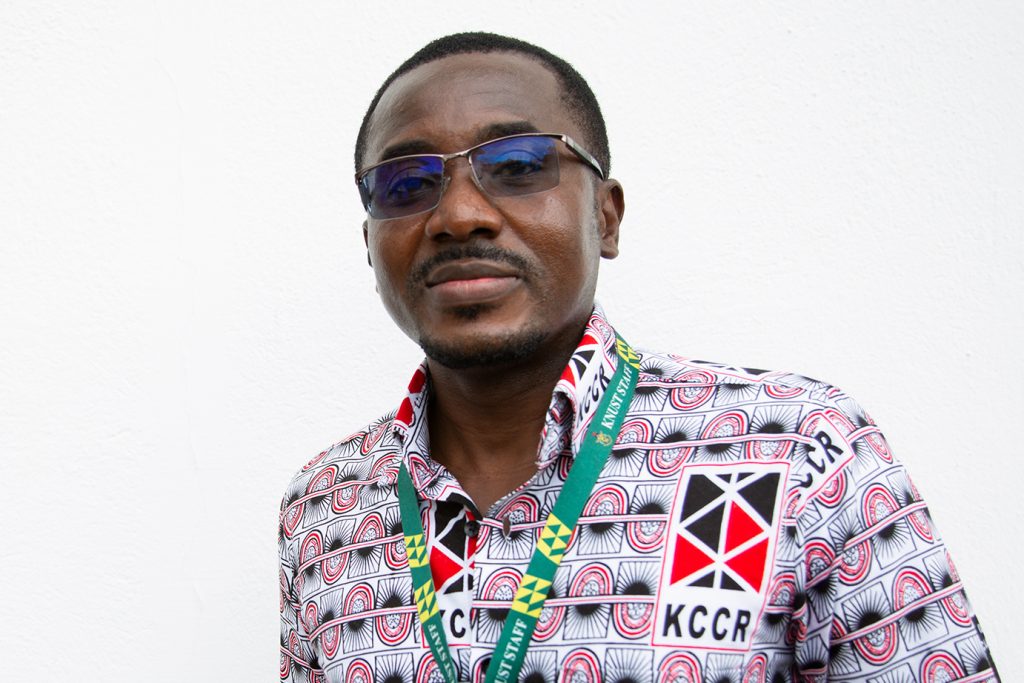
Project Manager
Jubin Osei Mensah
Phone: +233 20 909 9572
E-Mail: jubinom@yahoo.com
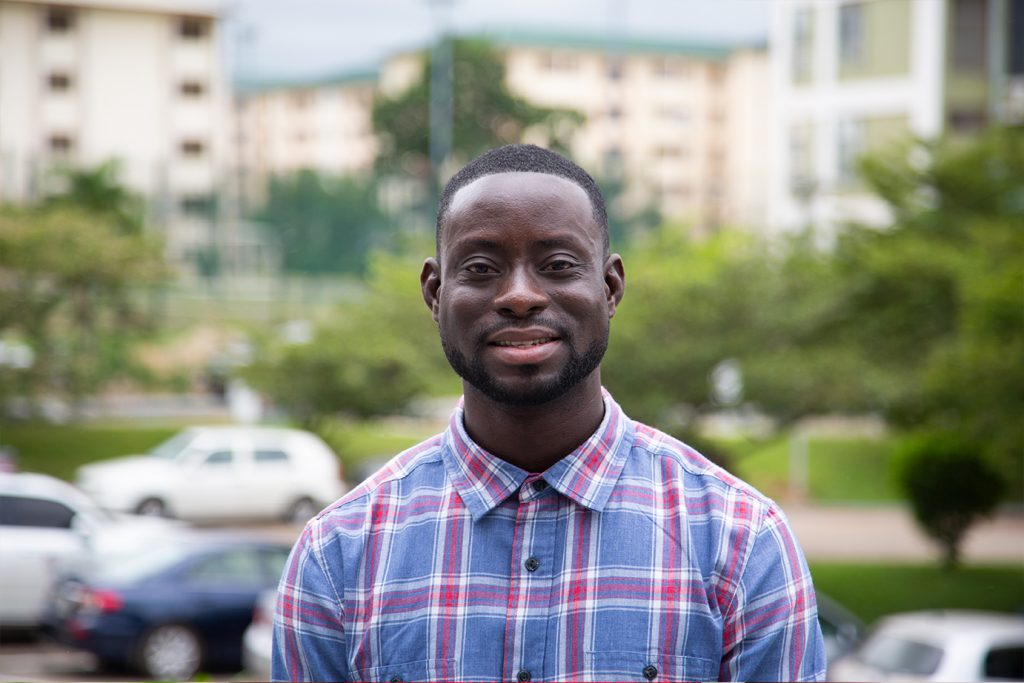
Post Doctoral Fellow
Derrick Adu Mensah
Phone: +233 26 168 6052
E-Mail: derrickadumensah@yahoo.com
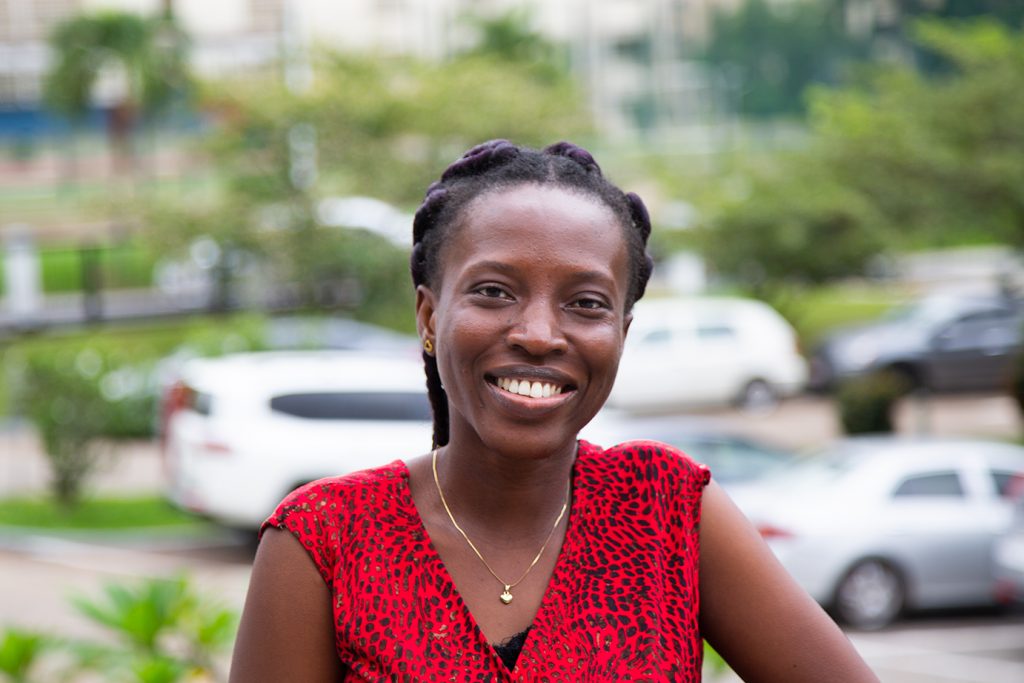
Post Doctoral Fellow
Vera Serwaa Opoku
Phone: +233 20 897 7962
E-Mail: vopoku88@gmail.com


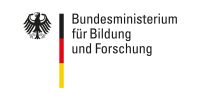





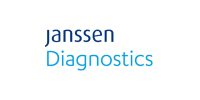
South-end Asuogya Road,
KNUST, Kumasi
Ghana
GPS: AK-312-1059
Monday – Friday
8am – 5pm
Monday – Sunday
8am – 5pm
KUMASI CENTRE FOR COLLABORATIVE RESEARCH IN TROPICAL MEDICINE
Copyright © 2024. All rights reserved